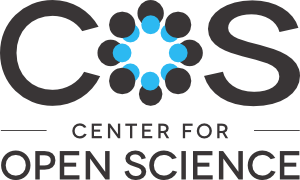Location
Our mission is to increase openness, integrity, and reproducibility of research.
These are core values of scholarship and practicing them is presumed to increase the efficiency of acquiring knowledge.
For COS to achieve our mission, we must drive change in the culture and incentives that drive researchers’ behavior, the infrastructure that supports their research, and the business models that dominate scholarly communication.
This culture change requires simultaneous movement by funders, institutions, researchers, and service providers across national and disciplinary boundaries. Despite this, the vision is achievable because openness, integrity, and reproducibility are shared values, the technological capacity is available, and alternative sustainable business models exist.
COS's philosophy and motivation is summarized in its strategic plan and in scholarly articles outlining a vision of scientific utopia for research communication and research practices.
Because of our generous funders and outstanding partners, we are able to produce entirely free and open-source products and services. Use the header above to explore the team, services, and communities that make COS possible and productive.
Members:
Resources
Displaying 131 - 135 of 447Agricultural Land Fragmentation and Land Consolidation Rationality
Adopted about one year after the 1989 Revolution, Land Law (Law 18/1991) represented the starting point of land reform in Romania. As a result of this law implementation, at the beginning of the year 2000 the private sector owned 84% of total agricultural land: 82% of arable land, 74% of land under vineyards, 67% of land under orchards and 87% of land under meadows and pastures.
PATTERNS OF TENURE INSECURITY IN GUYANA
As of 1998, the land tenure situation along Guyana's coast was marked by disarray and insecurity. Renewed interest in land following the economic and political liberalization of the early 1990s spawned land conflicts and exacerbated their severity. This paper, based on fieldwork conducted in 1997-8, explores aspects of this situation, drawing extensively on case-study material. Attention is drawn to the impact on land tenure dynamics of several unique aspects of Guyana's development history, particularly, the country's phased development inward from the coast.
Forest and Forest Land Valuation: How to Value Forests and Forest Land to Include Carbon Costs and Benefits
Scaling behavior in land markets
In this paper we present an analysis of power law statistics on land markets. There have been no other studies that have analyzed power law statistics on land markets up to now. We analyzed a database of the assessed value of land, which is officially monitored and made available to the public by the Ministry of Land, Infrastructure, and Transport Government of Japan. This is the largest database of Japan's land prices, and consists of approximately 30,000 points for each year of a 6-year period (1995-2000).
Dynamics of Phosphorus Fertilization and Liming Under Land Tenure Insecurity
This article solves and characterizes optimal decision rules to invest in irreversible land improvements conditional on land tenure insecurity. Economic model is a normative dynamic programming model with known parameter for the one period returns and transition equations. The decision rules are solved numerically conditional on alternative scenarios on the likelihood that the lease contract and, thus, farmer access to land is either renewed or expires. The model parameters represent Finnish soil quality and production conditions.


